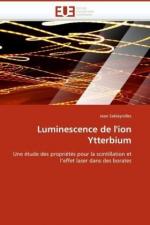|
This section contains 264 words (approx. 1 page at 300 words per page) |
Ytterbium is a rare earth metal, one of the elements found in Row 6 of the periodic table. It has an atomic number of 70, an atomic mass of 173.04, and a chemical symbol of Yb.
Properties
Ytterbium is a typical metal that is both ductile and malleable. It has a melting point of 1,515°F (824°C), a boiling point of 2,600°F (1,427°C), and a density of 7.01 grams per cubic centimeter. Ytterbium is a relatively reactive element that is usually stored in sealed containers to prevent its reacting with oxygen of the air.
Occurrence and Extraction
Ytterbium is one of the more common rare earth metals with an abundance in the Earth's crust of about 2.7-8 parts per million. Its most common ore is monazite, which is found in beach sands in Brazil, India, and Florida. It is extracted from its ores by heating lanthanum metal with ytterbium oxide (Yb2O3): 2La + Yb2O3 2Yb + La2O3.
Discovery and Naming
Ytterbium was "discovered" over a period of more than 20 years by three chemists: Jean-Charles-Galissard de Marignac (1817-94) of France, Lars Fredrik Nilson (1840-99) of Sweden, and Georges Urbain (1872-1938) of France. The three chemists all worked on a mineral known as yttria originally discovered near the town of Ytterby, Sweden, in 1787. The mineral eventually yielded nine new chemical elements. The element was given the name of ytterbium in honor of the town near which it was discovered.
Uses
Very small amounts of ytterbium are used in the manufacture of special steel alloys and in lasers. Generally speaking, however, it has almost no commercial application of significance.
|
This section contains 264 words (approx. 1 page at 300 words per page) |


